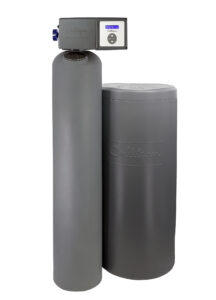Smelly water may be a sign of iron in your water.
 Iron, also known as Fe, is the fourth most common element found in the Earth’s crust. Iron is commonly found in groundwater, which is the source for private wells. Iron can also be found in older household pipes and dead-ends in water distribution pipes.
Iron, also known as Fe, is the fourth most common element found in the Earth’s crust. Iron is commonly found in groundwater, which is the source for private wells. Iron can also be found in older household pipes and dead-ends in water distribution pipes.
When iron is exposed to oxygen in the soil, iron bacteria can form. Iron bacteria can cause bad tastes and odors, discolored water, and can reduce water flow rate by clogging pipes.
How Does Iron Get in Your Water?
Because of its abundant presence in the Earth’s crust, iron is commonly found in soil and sediment. Water that travels underground through this soil and sediment may pick up iron on its way to source a private well. These private wells then provide drinking water to about 15% of Americans.
Rainwater can also be the source of iron in water. When water falls as rain, it can pick up iron through the atmosphere, landing in many surface water sources such as creeks, lakes and rivers.
How to Reduce Iron From Your Water
Water treatment is available to reduce iron in water. To minimize metallic taste, rust stains and discoloration, water may be filtered or undergo an ion exchange to reduce soluble iron or iron that is too small to be filtered. In some cases, both filtration and water softening may be required.
Do you have signs of iron in your water? A water test is the best way to find out if you have iron in your water. Your local Culligan Man can test your water to find out if iron is present and what type it is. From there, he will determine the best iron reduction filter for you and create a water treatment solution that will make your water taste and look better.



 Iron, also known as Fe, is the fourth most common element found in the Earth’s crust. Iron is commonly found in groundwater, which is the source for private wells. Iron can also be found in older household pipes and dead-ends in water distribution pipes.
Iron, also known as Fe, is the fourth most common element found in the Earth’s crust. Iron is commonly found in groundwater, which is the source for private wells. Iron can also be found in older household pipes and dead-ends in water distribution pipes.



